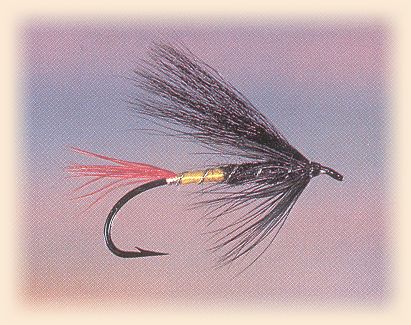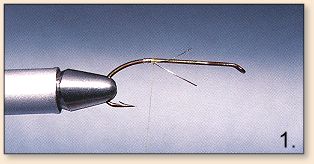
1. Attach the tying thread to the hook and bring back directly
over the point of the hook and tie in a piece of fine oval silver
tinsel. Wind it forward five or six turns and tie off.
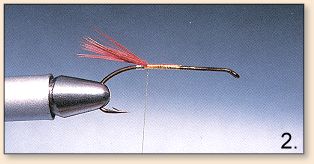
2. Tie in a small bunch of red hackle fibers slightly
longer than the gap of the hook.
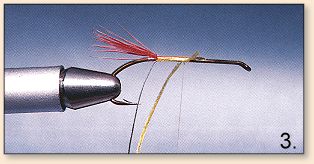
3. Tie in a piece of medium oval silver tinsel and bring
the thread forward about a third of the way and tie in a
piece of yellow floss.
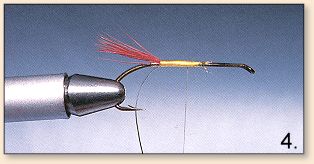
4. Wrap the floss back to the tie-in point of the tail and
wrap it back forward to the tie-in point of the floss and
tie it off. Try to keep the floss flat and fairly thin.
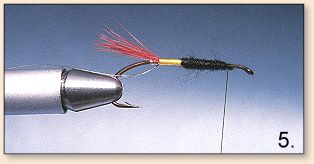
5. Tie in a piece of black yarn, bring the thread forward
to about 3/16 of an inch from the eye. Wind the yarn forward
and tie off.
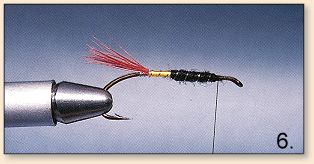
6. Wind five or six turns of tinsel for a rib, trying to keep
them evenly spaced. The number of wraps is subject to
your preference.
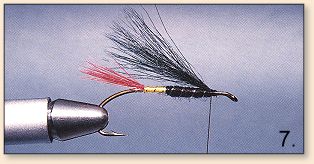
7. Take a small bunch of black hair, about half of the
total amount wanted for the entire wing, and tie it in with
a few tight wraps of thread, making sure the ends of
the wing come to about the middle of the tail. Add a small
drop of head cement to the wraps.
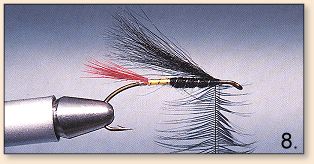
8. Tie in a black hen hackle with the fibers about a
gap-and-a half length by the tip.
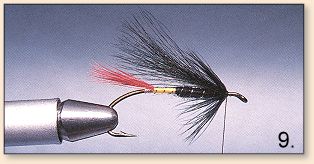
9. Fold the hackle in half, take three or four turns of
hackle and tie it off.
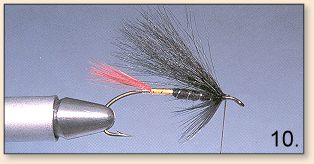
10. Tie in another small bunch of hair with some tight
wraps and cement. Let set a moment.
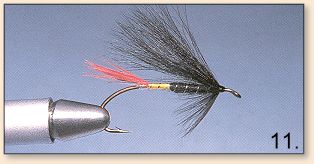
11. Wind a fairly small head, whip finish it off and
cement. The finished Black Prince.
Publisher's Note: For more steelhead flies, see the
Streamer Section
in the Atlantic Tying Section.
Credits: From Steelhead Fly Tying Guide by
H. Kent Helvie, published by Frank Amato Publications.

